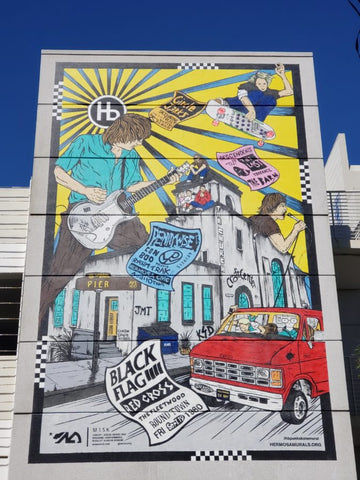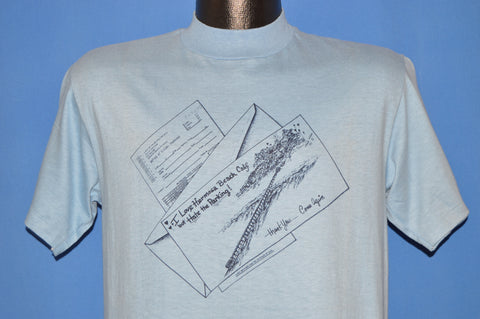Hermosa Beach, California is known around the world for its punk rock history. So when we found this artifact from the town's hippie heyday, we decided to take a closer look at the cultural transition.
In the small surfer town, Greeko's Sandals was a haven for the free-spirited locals, selling Greek-style sandals, marijuana pipes and bongs, hippie-style clothing, hemp goods, and incense. Owned by John Warren, who came to be known as Johnny Greekos, the shop first opened its doors in 1966.

Greeko's was a beacon of Hermosa's hippie beatnik heritage. However, in 1982, a new bill was passed that banned the sale of materials intended for drug use. The pressure was placed on the head shop to adapt to the vastly changing atmosphere of Hermosa.
Warren sold the shop in the early 90s and the new owner reorganized the shop to be more family-friendly. But sales were plummeting, and by 2008, Greeko's closed its doors for good. The shop was one of the many casualties of gentrification in Hermosa Beach.
But the hippie culture of the South Bay was challenged by another force -- punk rock.
By the 70s, punk rock music and culture took over Hermosa and the South Bay, beginning with Greg Ginn and his friends forming Black Flag in 1976, one of the most influential bands of the genre. Hardcore punks rejected their punk and hippie predecessors in a movement dubbed as, "a rebellion against a rebellion."
Unlike the popular punk bands from Los Angeles, hardcore punk bands were rarely signed to major record labels. Instead, Ginn created the independent label, SST Records, where he signed a number of groups from Southern California. SST Records created a nationwide network of underground bands. The new generation of suburban punk bands included the Descendants, Circle Jerks, Red Kross, the Minutemen, and The Last. Pennywise recorded their first record on a small label in Hermosa Beach in the early 90s.
Hardcore punk music went hand in hand with the predominant skateboarding and surfing culture in the South Bay. It was the soundtrack to ride to, colored by passion, rage, and confrontation.
Skateboarding was invented by surfers in the 50s as a way to simulate riding a wave when the ocean was flat. Since then, it's become a quintessential aspect of Southern California. The very first skateboard competition was held at the Pier Avenue Junior High School in Hermosa Beach in 1963, then-called "sidewalk surfing."

The competition signified the rapid spread of skating, developing into a sport about skills and tricks rather than just cruising around. Banned from public walk ways for disorderliness, skateboarders turned to the empty private pools around the neighborhood. It became a symbol of rebellion and freedom.
The first skateboarding magazine, "The Quarterly Skateboarder," was published in 1964, spreading to young people across the country. Companies like Hobie and Makaha began hosting competitions featuring early professional skaters.
Legendary professional skaters from the South Bay like Rodney Mullen, Cindy Whitehead, Kevin Anderson, and Steve Rocco paved the way for modern skateboarding. They tested the limits of gravity and the limits of the authority. It was a crime to skate, and for that reason it appealed to the young and rebellious generation.

The mainstream culture fiercely rejected the emerging punk scene, often resulting in violence. Shunned from their hometown, Black Flag went to perform in Los Angeles. But like the authorities in Hermosa, Los Angeles police violently shut down live shows. At an infamous concert at the Hollywood Palladium, Black Flag opened for the Ramones. Riot police waited for concert goers outside of the venue to beat and arrest them.
After years of backlash against the punk scene a new mural was unveiled in 2018, dedicated to the town's punk rock roots.





